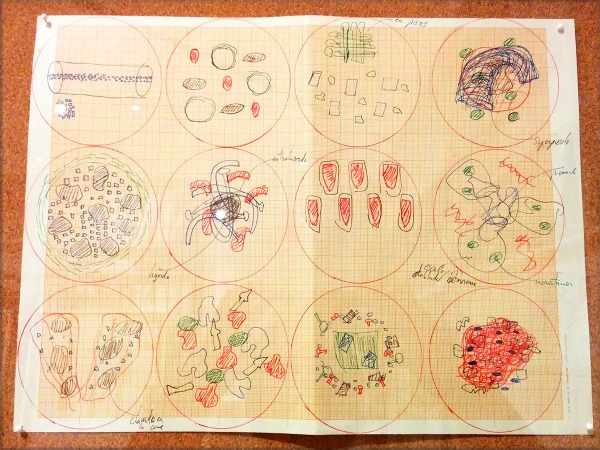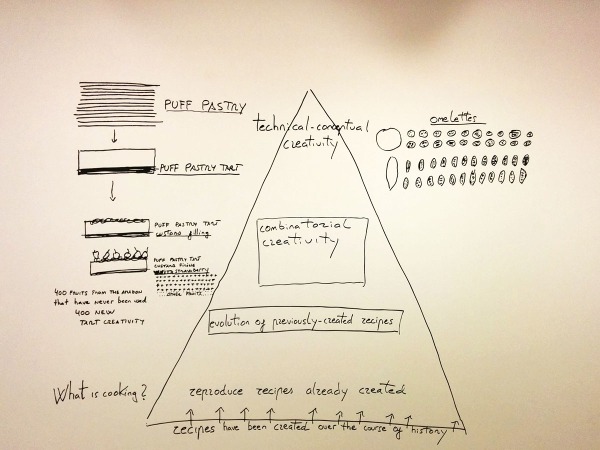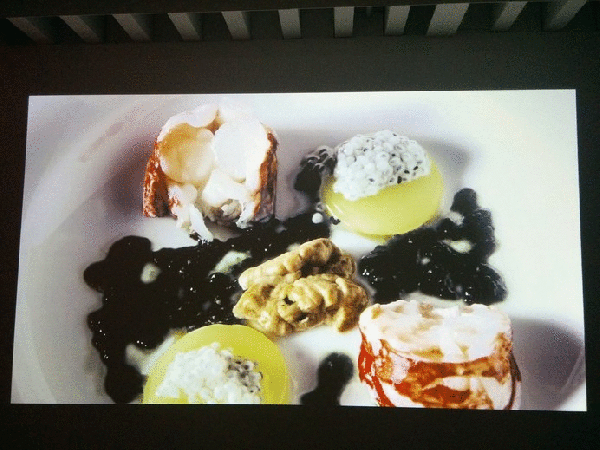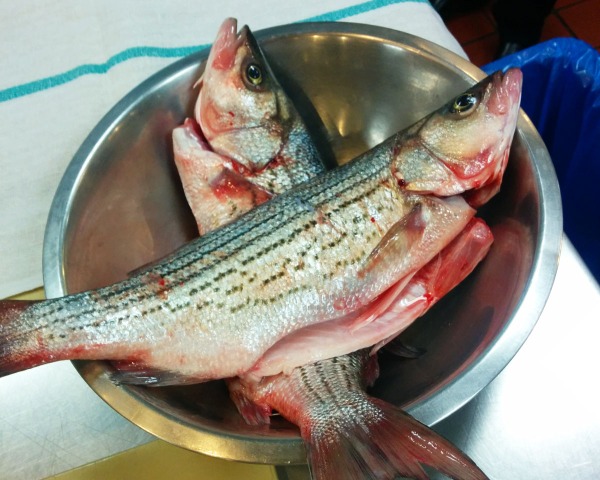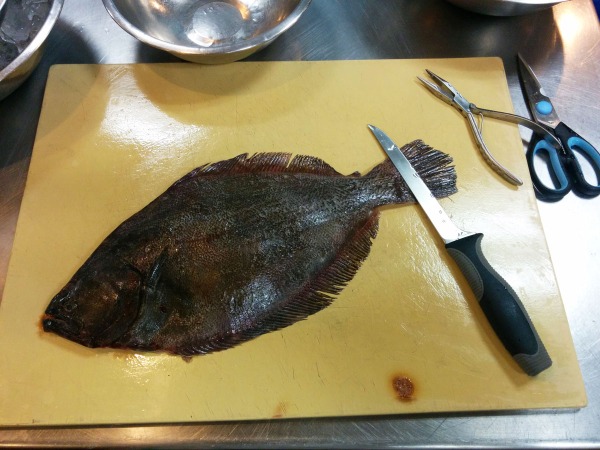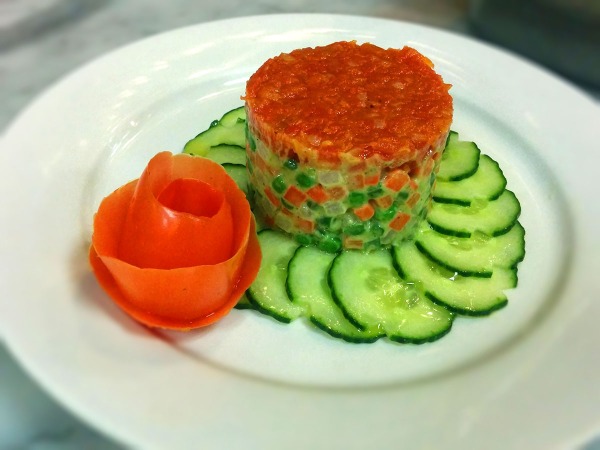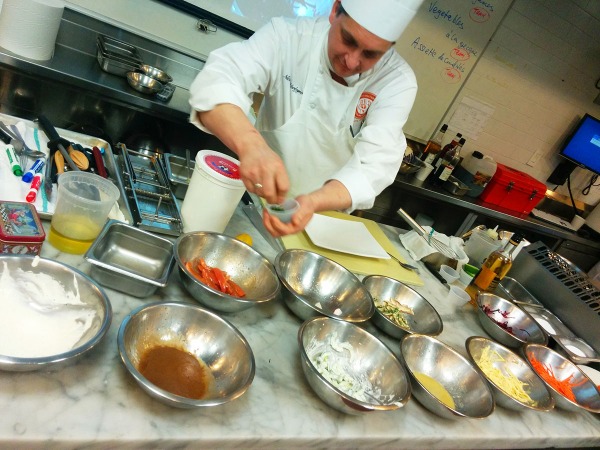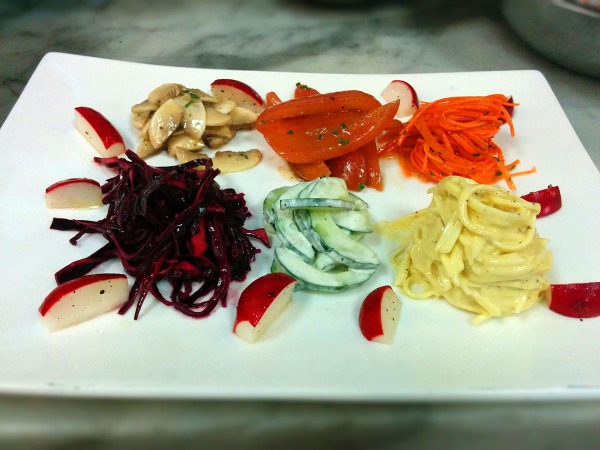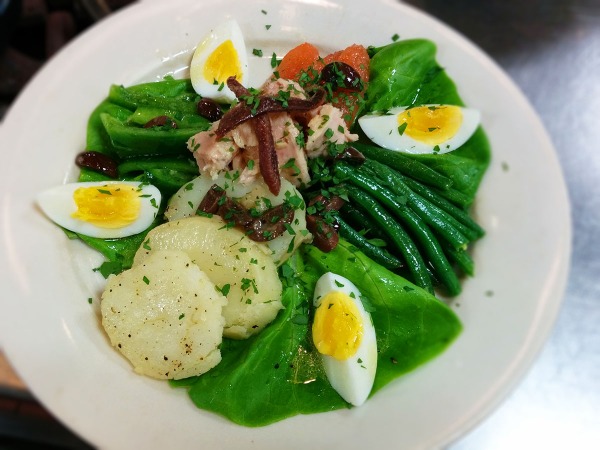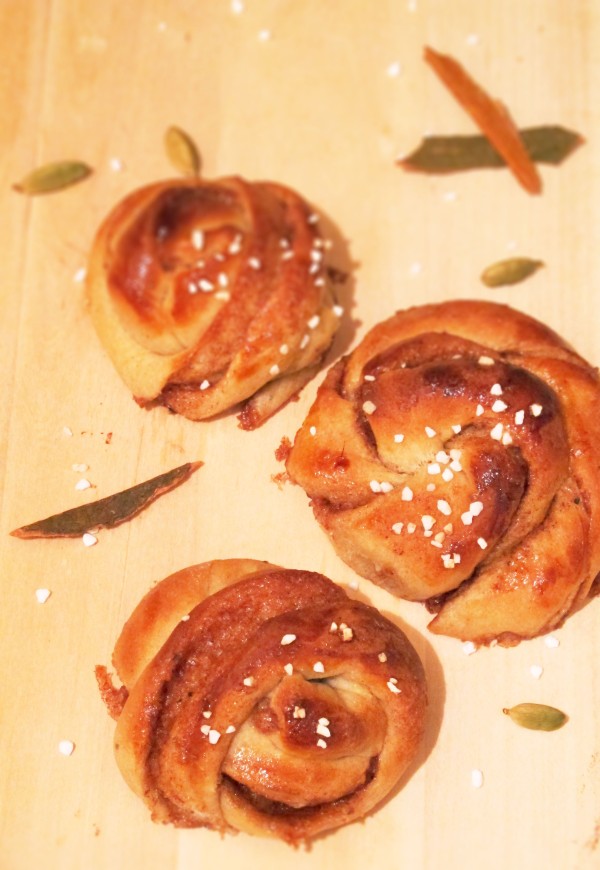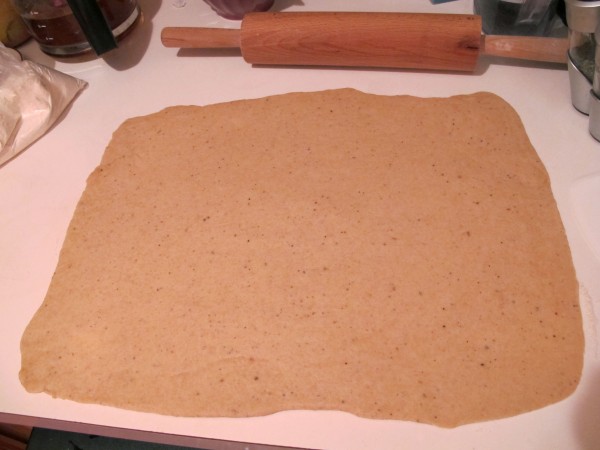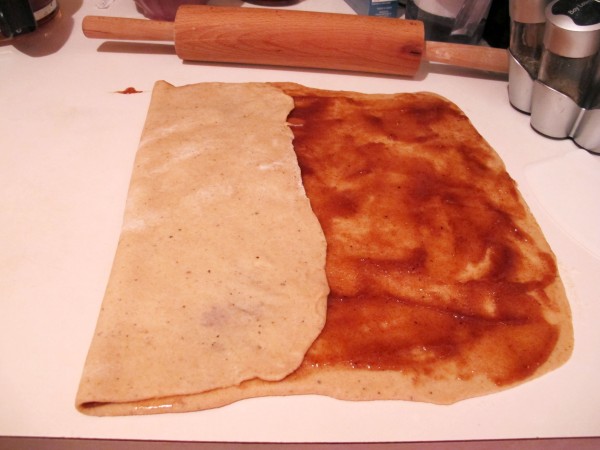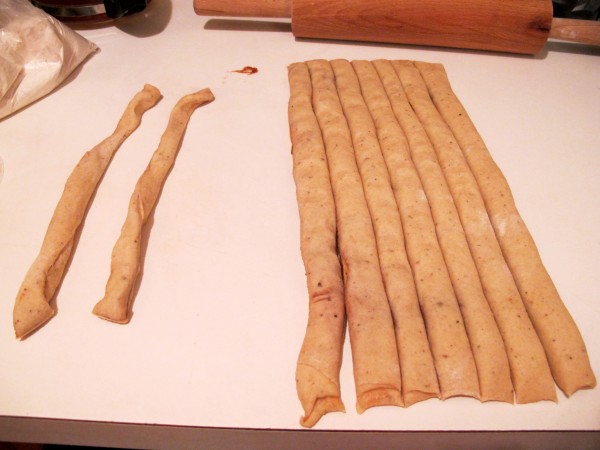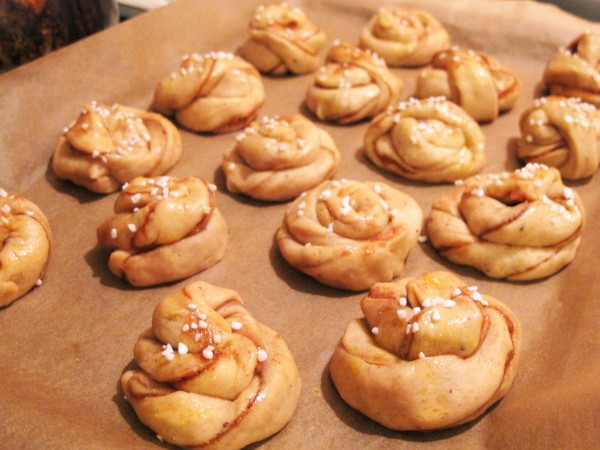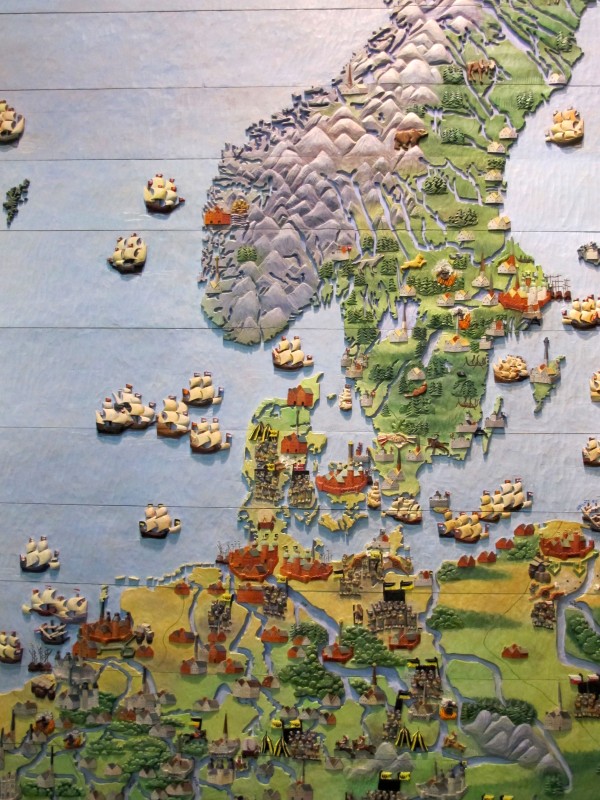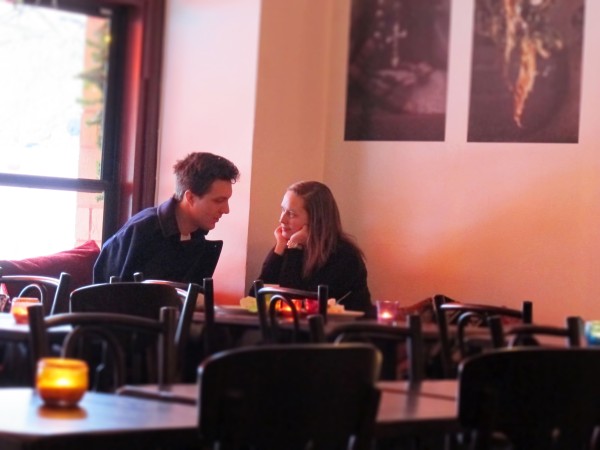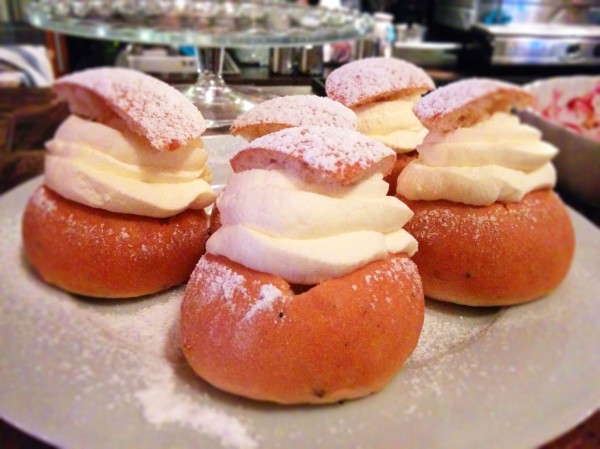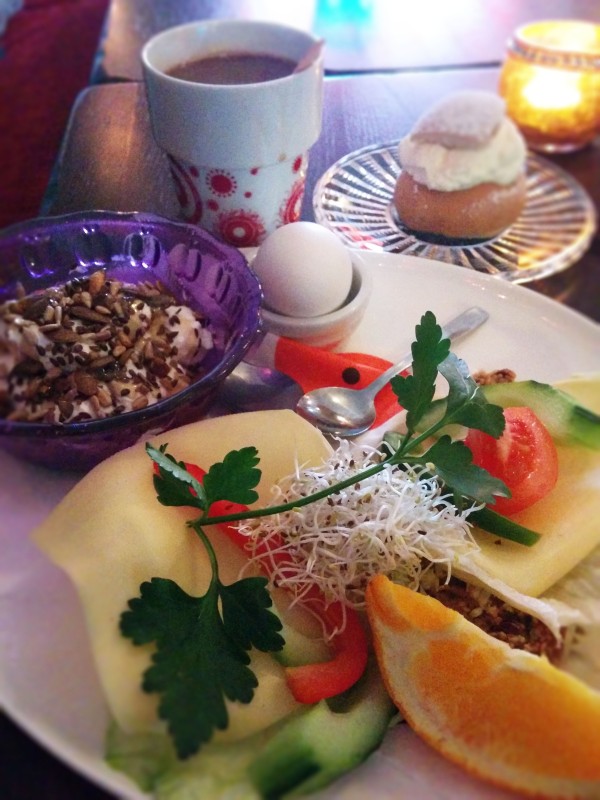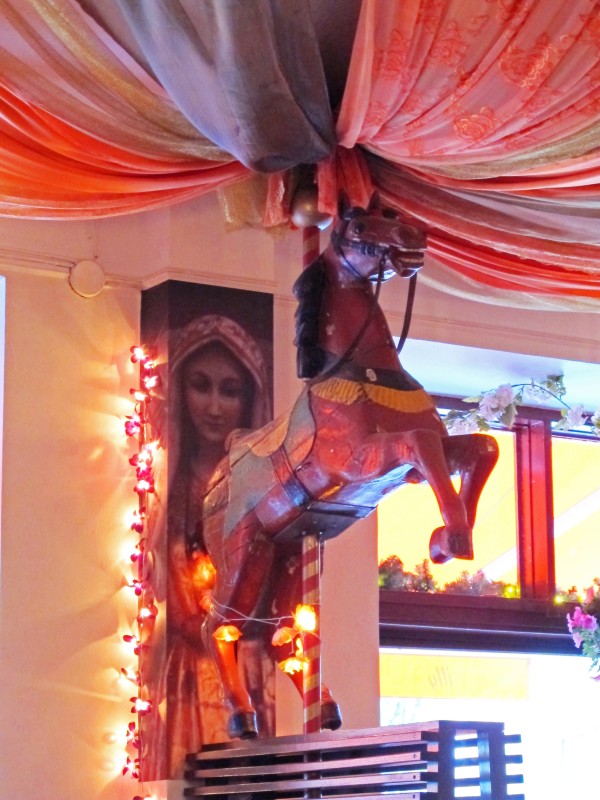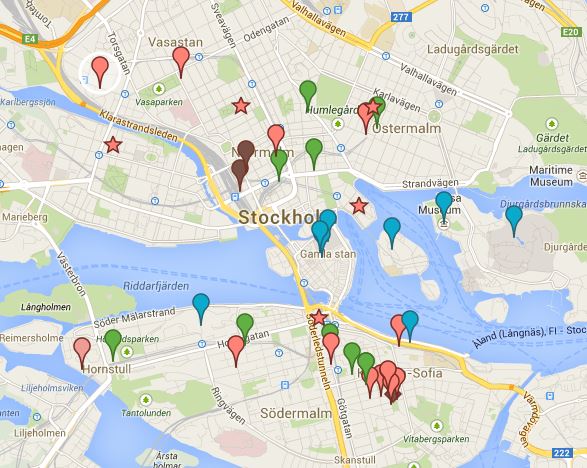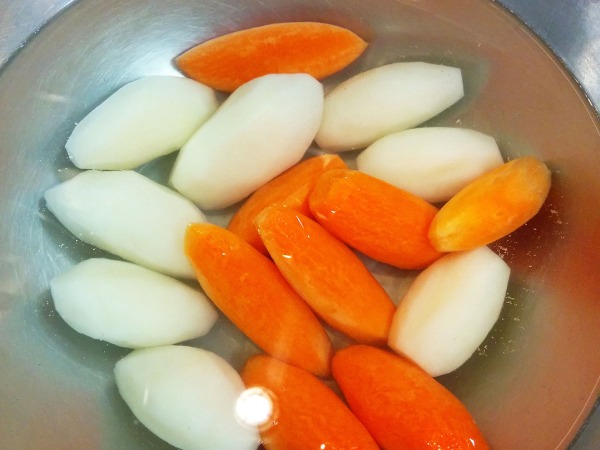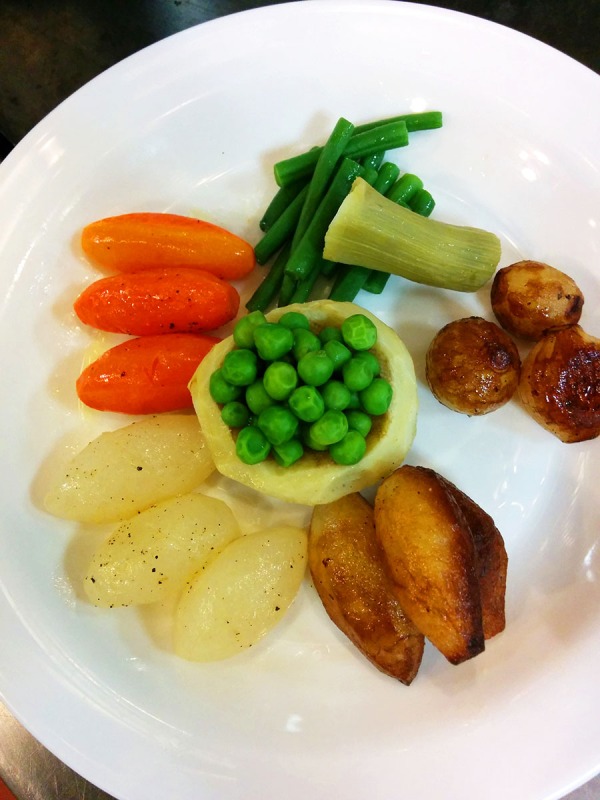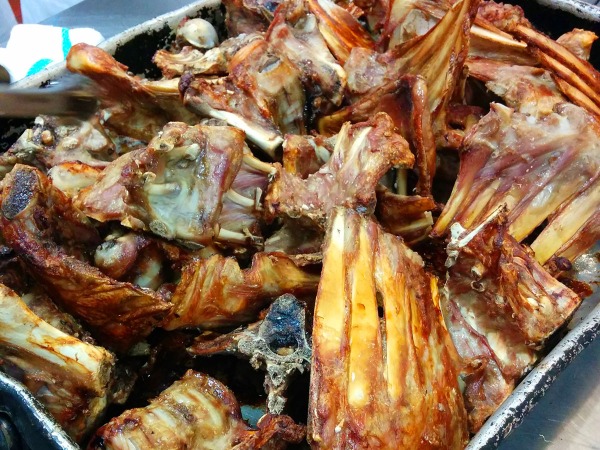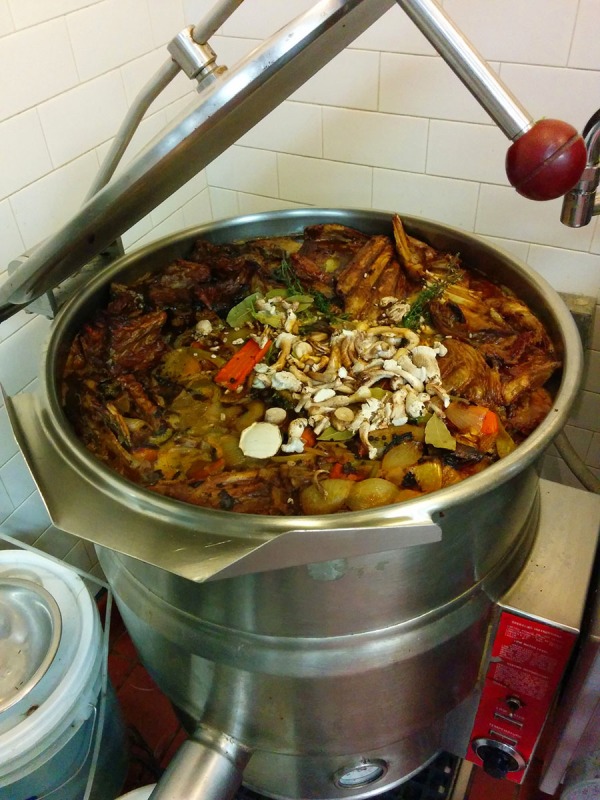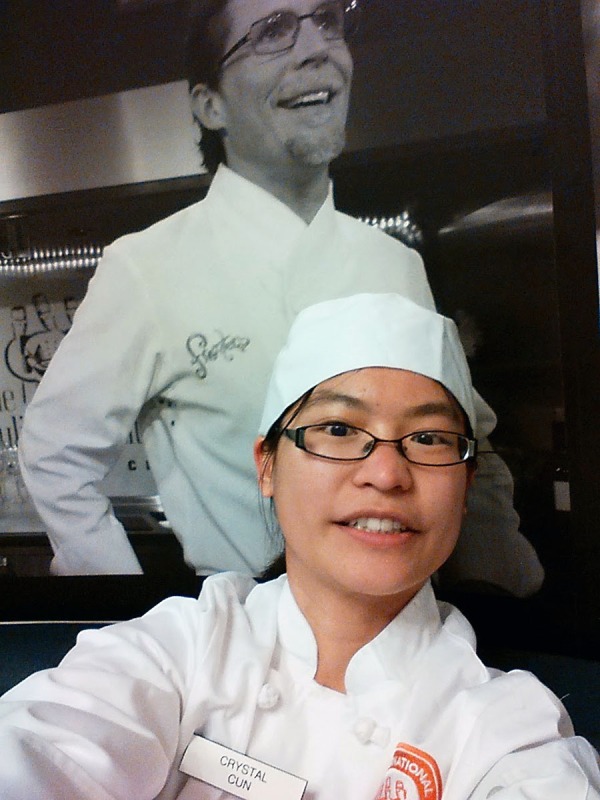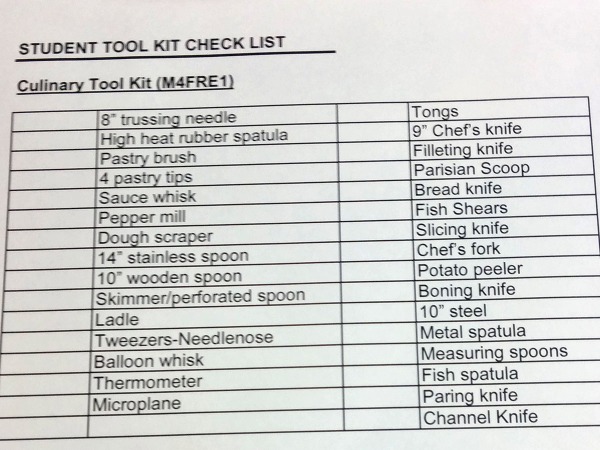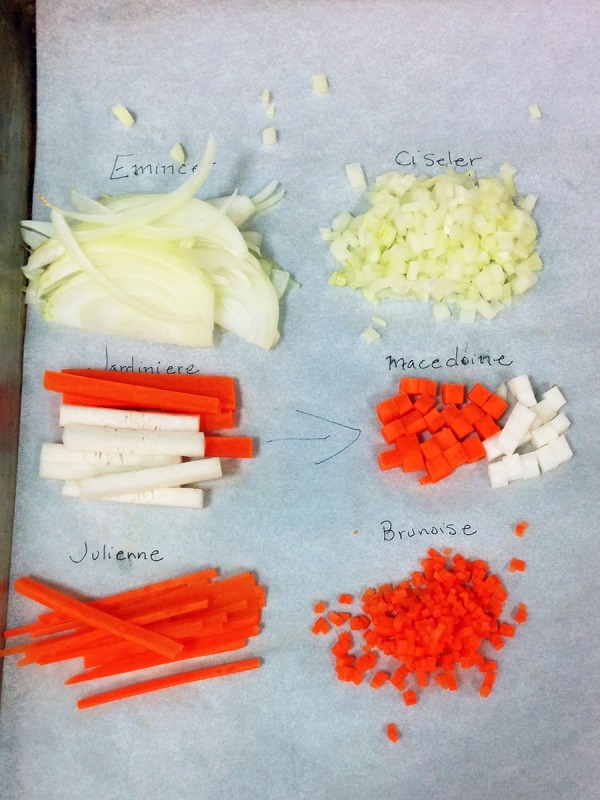The Drawing Center is hosting Ferran Adrià: Notes on Creativity, the first major museum exhibition of Adrià’s notebooks and visualization tools. As you may know, Adrià is widely acknowledged as one of the best chefs of our time, someone who radically impacted the way cooking has evolved in the last decade or so. For over two decades, he helmed the kitchen at El Bulli in Roses, Spain, where his staff rigorously experimented with the play of aromas, textures and flavors. You may never have an opportunity to try Adrià’s spherified olives, pine nut marshmallows or rose-scented mozzarella, especially since El Bulli is now closed. However, if you’ve ever encountered a traditional dish remade in another form (like a sandwich presented as a drink) or a contemporary menu without defined categories (appetizers vs entrees), you’ve probably tasted Adrià’s influence.
The popular conception of creativity is that creative insight just happens, out of the blue, in the shower, or when you’re least expecting it. In Adrià’s eyes, the creative process is not really about spontaneity, it is an extremely organized process. El Bulli was tasked with preparing 30+ dishes per diner each night, with the goal of never serving the same dinner twice, particularly for repeat customers. The pressure to constantly come up with new and innovative dishes was immense. While some of El Bulli’s dish concepts were created spontaneously and inadvertently, more often the creative process looked like this:
We search (using a method):
Regional cooking as a style
Influences from other cuisines
Technique-concept search
The senses as a starting out point for creativity
The sixth sense
Symbiosis of the sweet/savoury worlds
Commercial products and preparations in haute cuisine
A new way of serving food
Changes in the structure of dishes
Adaptation
Association
Inspirations
Deconstructions
Minimalism
Changes in menu structure
*******synergy*****
AN IDEA
We develop the idea with the help of methods or with intuition
Tests
Analysis/Reflection — We use the mental palate
Finish and final tests = PROTOTYPE
Serving the diner
Final retouches
THE DISH CATALOGUED
If you attend the exhibit, don’t forget to check out the film screening downstairs, which includes a photo of every dish served at El Bulli.
Dear readers, I have a confession to make: while I work in the seafood industry and am an avid seafood lover, I have never filleted a fish. It’s not for a lack of opportunity per se. The thing is, I was raised in an Asian family where the policy on fish was, “If you can’t pick out the bones, then you don’t deserve to eat.” So we cleaved our fish into large steaks or steamed it whole, with a splash of soy sauce over a shower of ginger and scallion strips. It was simple and satisfying, no need to get fancy.
Which brings us to Fish Week, or lessons 8 and 9 at culinary school. “What’s wrong with just buying filleted fish?” someone asked. “Nothing,” replied Chef Ray, “except that you don’t really know how fresh it is. Unless they fillet it in front of you, you can’t check the eyes, the gills or the skin. You can only smell it for freshness. Hell, you don’t even know if it’s the fish they say it is.” We mulled that over. “This lesson was originally written so that each team fillets a fish together. But that’s silly, what’s the point of filleting just half of the fish?” said Chef Ray. “I ordered enough fish so that each of you can fillet one round fish and one flatfish. Let’s get to it.”
In just a few deft motions, Chef Ray slit the striped bass along its spine and gently removed a fillet. “Use long, smooth strokes guys. Don’t saw at it, and make sure you bend your knife so that it scrapes against the bones,” he instructed. You could hear his blade rasping against the spine. After both fillets were removed, Chef Ray slid his knife between the meat and skin, and gently stripped it away. What remained was a perfect slab of fish, pink and well shaped. It looked simple enough.
“Remember to always check the freshness of the fish before you start!” said Chef Ray. “Clear eyes, taut stomach, bright skin, gills full of blood, no fishy or off smells.” I blotted my fish with a clean towel to dry it, and began snipping off the fins with kitchen shears. “Watch out for the spikes in those dorsal fins, they can really hurt!” warned Chef Ray. With my fish knife (thin, flexible and very sharp), I began slicing against the spine. Wait, is that bone or meat? Why is the skin not slipping off? I glanced across at my partner’s fish; he’d already finished his fillets and was cleaning his carcass of entrails. “Five more minutes!” said Chef Ray. I hurried to remove the skin and yank the remaining pin bones out with pliers. Two fillets sat on the cutting board, mangled by cuts and disappointment.
The process for filleting flatfish is a little different than for round fish. Flatfish have four fillets, not two, and swim horizontally, with their bellies parallel to the seafloor. You begin by slitting down the center of the fish, following the spine, then take out two fillets from the top of the fish, and two from the underside of the fish. It’s much easier to fillet a flatfish and the fins are floppy, so you can’t stab yourself inadvertently. After tackling my flounder, I was left with four ragged but mostly respectable fillets, and a carcass which would be used for fish stock.
Read more…
After several introductory classes of stock and sauce making, we moved into making complete dishes. Namely, salads, vegetable dishes and soups. I tried not to yawn. “Vegetables are important!” insisted my chef-friend Wendy. “It’s difficult to do them well.” I tried to muster some excitement, but the thought of making 6 different types of vinaigrette was already making my whisking arm ache.
In class, we were greeted by some new faces. Chefs Ray and Janet were taking time off and so we were under the tutelage of Chefs Dominique, Nicolay, Guido and Jose for a few lessons. Immediately, we had to adjust our bearings to the instructor. Chef Ray’s macedoine cut was a little larger than Chef Nic’s, so I scrapped my vegetables and started over, lest we get chastised for improper taillage.
Chef Nic was also much heavier handed with seasoning. When we were repeatedly told that our food didn’t have enough salt or lemon, we would add more to the next dish. Finally, for our final plate of celery rémoulade, I dumped a big scoop of mustard and salt into the bowl, then tasted the celery root. Horror curled my tongue. “I think it’s too salty,” I whispered to my partner. “Oh no, what do we do?” He swiped at the sauce and said, “Actually, I think it’s fine, it just needs a little more lemon.” We brought our assiette de crudités up to the front and held our breath. “There’s too much dressing on the mushrooms, see how it’s pooling on the plate here?” said Chef Nic. “Also, there’s a little too much dressing on the celery root. But other than that, it’s fine.” I couldn’t believe my ears. “So, the celery rémoulade is not too salty?” I asked. “Nope, it’s just right,” Chef Nic replied. “Remember, restaurant food is paired with wine, and needs to be saltier than food eaten without wine. If you have a table where everyone is drinking wine except for one person, it’s not unusual for that one person to complain that the food is too salty, while everyone else is happy.”
So the salads, how did they taste? Turns out that when you treat each ingredient with care and allow its full expression to shine, salads can be flavorful, beautiful and dare I say it, exciting. We made a traditional salade niçoise, and each element was carefully washed, cut, seasoned and dressed to create a perfectly harmonious plate. “Why are you peeling the green pepper?” someone asked. “Because I don’t want the skin,” said Chef Dominique. We laughed. “Sometimes the skin can be a little tough or bitter, so I peel it,” Chef Dominique explained.
The macédoine de légumes cooked vegetable salad is actually one of my new all-time favorites, an exercise in how simple ingredients cooked well can come together to create something truly stunning. You make mayo and tomato sauce, then cut carrots, turnips, beans and peas into uniform pieces, cook each vegetable separately, then bind the vegetables together with the mayo and some basil puree, topped by a layer of tomato sauce. The result is creamy and acidic, sweet and savory, refreshing and satisfying. This was one of the most popular salads of the late 19th century, and is still often served in Parisian bistros today, but there probably aren’t any restaurants in NYC serving it now. Quel dommage!
Read more…
Recipe: Swedish Cinnamon Rolls
While I was in Sweden, I fell in love with the cinnamon rolls that are ubiquitous in their bakeries and cafes. Buttery pinwheels laced with cinnamon and crunchy pearl sugar, and a hint of cardamom to add an exotic depth not seen in your monstrous American Cinnabon.
Unfortunately, when I looked at recipes for Swedish-style cinnamon rolls, many of them were for massive batches (30-40 rolls?!) or in uncomfortable European measurements (deciliters). Baking is already fraught with volume vs weight peril as is, and I was hesitant to follow any one recipe. So, as is usually the case in situations like this, I analyzed several recipes and came up with some averages in convenient quantities.
Essentially, you make a sweet bread dough with caradamom and let it rise for about 90 minutes. Then, lightly flour a clean counter and roll the dough out into a thin rectangle, about 15″ x 20″.
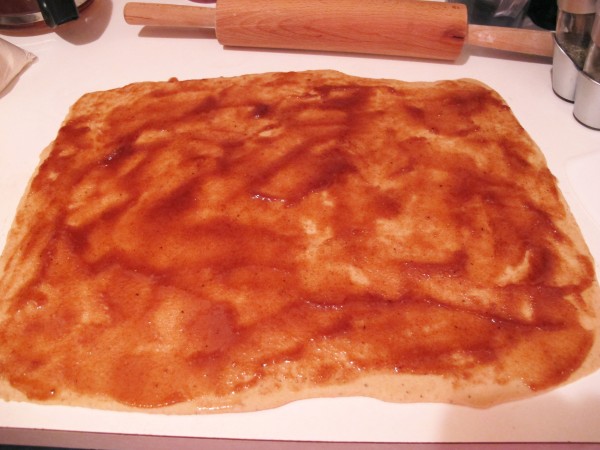
Cover the dough sheet with a layer of buttery and sugary goodness. This filling should be a little paste-like, not too runny.
Next, fold the dough like an envelope in even thirds.
Using a long knife, pizza wheel or dough scraper, cut long strips of dough about 1/2″ wide. I was able to get eight long strips, and then subsequently cut each strip in half to make smaller buns.
The tricky part is mastering how to twist the cinnamon rolls into knots. After doing some research (thank you, Youtube!), I discovered Martin Johansson, a popular home baker in Sweden who has published some books and has excellent videos demonstrating how to make cinnamon rolls.
Here’s the twist-and-spiral method:
Here’s the slightly more complicated loop-around-the-finger-and-over-the-top method:
I probably watched these videos a dozen times. Be gentle as you handle the dough, as it is quite stretchy and pliant.
When you have finished twisting your cinnamon rolls, lightly brush the tops with egg wash and give them a good sprinkle of Swedish pearl sugar (or another coarse white sugar). Into the oven they go!
The following recipe makes a manageable batch of 8 large cinnamon rolls or 16 mini-sized ones, which is what I prefer.
Read more…
Stockholm: If You Go
Here are some logistical tips and tricks if you’d like to travel to Stockholm or elsewhere in Sweden in the near future:
Flight: Norwegian Air is offering low cost fares from New York (JFK) to Stockholm and Oslo, with considerable deals in the winter and early spring. My round trip ticket was just €282 ($384), and if you book through their European site and purchase a ticket in euros using a credit card with no international fees, the ticket will be less expensive than if you purchase through the US site in dollars.
Norwegian Air is using Boeing 787 Dreamliner aircraft for their long-haul flights to Scandinavia and Bangkok. These planes travel on very tight schedules and have been plagued with engineering issues, as is evidenced by Google’s auto-complete “norwegian air 787 problems.” Luckily, both of my flights took off on time.
The airplane features a number of weight and fuel sustainability advances, but the jewel for passengers is undoubtedly the world’s first Android-based in-flight entertainment system, which uses touchscreens to allow passengers to choose movies, order food, control their reading lights, call flight attendants, etc. I was also impressed by the 3D map, which provided an incredible amount of detail on our flight path and destination cities. I was able to zoom in to see my block in New York.
While Norwegian Air has technological bells and whistles, it lacks the usual international flight amenities. Meals must be ordered ahead of time (around $30), blankets are $5, headphones are $3, and low-fare customers must pay to check baggage. You are allowed one small personal item and one 50 x 40 x 23 cm bag under 10 kg for free. So, don’t count on that free glass of wine on this flight. I simply bought sandwiches at the airport before hopping on my flights and judging from the appearance of the food I saw across the aisle, I’d say that brown-bagging is definitely the way to go.
Oh, and if you are traveling to Scandinavia hoping to see the Northern Lights, the 787 Dreamliner provides a psychedelic light show overhead.
Read more…
After learning about Sweden’s medieval and pre-industrialization history, I wanted to feel the pulse of contemporary Sweden. The trendier parts of Stockholm (I stayed in the Sofo neighborhood, a play on NYC’s Soho) are chic and streamlined, like walking around a giant IKEA store, or hipper-than-thou neighborhoods in Brooklyn (cough, Williamsburg). You can get a good read on the city by simply hopping between cafes, which are present in abundance at a density that rivals Italian cities. These cafes often serve espresso and cinnamon rolls, and you can also find hybrids like cafe-thrift stores, cafe-record stores, cafe-office, cafe-hair salon, etc. Swedes take their coffee very seriously it seems, perhaps as a substitute for alcohol. This is, of course, by design, since Sweden has a state-run monopoly on alcohol sales and the prices are inflated to discourage drinking in prodigious quantities. All this means that Swedes go to Denmark or Germany to bring back cheaper booze.
Many cafes also offer light meals, sandwiches and such, and you can usually get a breakfast or lunch special with food, juice and coffee for a set price.
Ready for some people watching? Don’t forget to bring your skinny jeans!

Vurma Cafe is like visiting your hippie, India-obsessed aunt, with brocade pillows in a rainbow of colors lining the benches and pink lights strung overhead. I visited the Nytorget branch, but they have multiple locations, so I wouldn’t be surprised if the others have a varying style. They offer a great breakfast menu with organic and gluten-free options. For 80 SEK, I got a bowl of Turkish yogurt with pumpkin, flax and sunflower seeds, accompanied by wide multigrain crackers topped with sprouts, tomato, cucumber and cheese, plus a hardboiled egg and coffee. I couldn’t resist the call of the semla cream puffs, and added one of those to my meal to balance out all the healthy items.
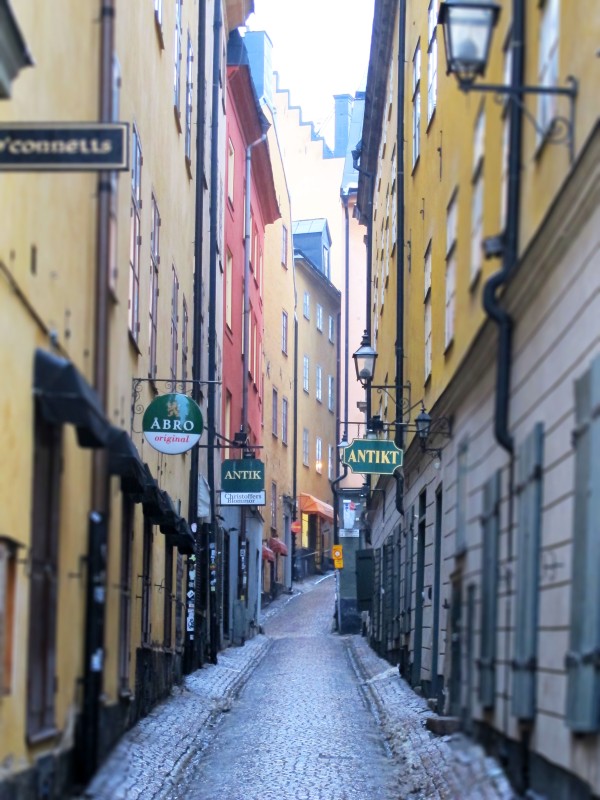
Sweden’s most well-known exports today are IKEA furniture and H&M clothing, which means my impression of the country is one of sleek modernism. Naturally, Sweden does have a history and is rightfully proud of its past accomplishments, I’ve simply never bothered to learn anything about them. So when I began researching this trip, I was a bit surprised at all the recommendations to see the Royal Palace. To be honest, before this trip, I didn’t even know Sweden still had a royal family. It seems a rather archaic institution to support (the state still funds them partially), though I guess the tourism benefits now outweigh any concerns about the monarchy trying to regain control. (More below.)
Many of Stockholm’s tourist attractions are concentrated on the island of Gamla Stan, or Old Town. Within these winding, medieval lanes, you’ll find the Royal Palace, the Riddarholmskyrkan Cathedral, the Nobel Museum and more. The Royal Palace entrance fee is a bit steep (150 SEK/$23 for adults or 75 SEK for students), however you do get entrance to three attractions: the Royal Apartments, the Treasury and the Tre Konor (Three Crowns) museum. Photos are not allowed in any of the Royal Palace exhibits, so I had to content myself with taking photos outside.
The changing of the Royal Guard takes place at noon each day, and while it was not as showy as say, the India-Pakistan border guard changing, it’s still fun to watch if you happen to be in the area. One thing I noticed was there were at least two female members, the first time I’ve ever seen women as part of a royal guard. I did a little bit of Googling and couldn’t figure out if Sweden was the first to do this, but at any rate they win points for being progressive!
I jumped into an English-language tour of the Treasury and learned the following tidbits on Sweden’s medieval history:
- The Royal Regalia includes 5 items (listed in order of importance): sword, crown, scepter, key and orb
- Tre Konor (Three Crowns) is the name of the original royal castle that was destroyed in a fire in 1697. The Swedish Coat of Arms also includes three crowns on it. Why three? One leading theory is that the three crowns represent the three parts of Sweden (Sweden, Norway and Denmark). That’s right, far from being amiable pacifists, the Swedes were out to conquer everything they could get, especially their neighbors. Another theory is that the crowns represent the three Wise Men, thus symbolizing the divine right of the king to rule.
- In Sweden, the absolute monarchy was outlawed in 1720. But like a zombie attack, the old kings and queens constantly plotted to regain power again, and did so successfully in 1772. King Gustav III introduced the Union and Security Act to fully restore the royal autocracy in 1789 (when the French Revolution began).
- Sweden’s queens seem to be more colorful and strong-willed than the kings. My favorite is Queen Louisa Ulrika, who was a pen pal of Voltaire, and highly annoyed by her mild-mannered husband, who was uninterested in getting more power. So in 1756, Queen Louisa Ulrika removed 44 diamonds from her crown and shipped them to Berlin to get funding to stage a coup d’etat. Unfortunately, she was found out, and many heads were beheaded except for hers, since the Queen was more or less beyond the law.
- The Coronation Robe is ruby red (the color of royalty) with ermine fur trimming because it was thought that ermines would rather kill themselves than get their fur dirty.
- In 1980, the constitution was reformed such that the oldest child would become the next King or Queen, not the oldest son. That meant Princess Victoria became next in line for the throne, not her younger brother Prince Carl Philip, who was about 6 months old at the time.
- None of these regalia items are actually used or worn nowadays, other than for ceremonial purposes like christenings and funerals. In those cases, the crown is placed on a pillow.
Europe for a Weekend: Stockholm

Image: designlovefest
Ever since I subscribed to The Flight Deal, there’s been a constant stream of cheap flights that drop in and tantalize me with dreams of kicking off and leaving the country on a whim. Well, I was finally in the right frame of mind when I saw direct flights from New York to Stockholm through Norwegian Air for just €282 (approximately $384). Given that I’ve paid more to get to the West Coast, going to Europe for a long weekend was sounding like a pretty good proposition.
Why such a short trip? First and foremost, I need to be back in town for culinary school. Secondly, on a trip to Japan, I met some people who regularly jetset to other countries for the weekend. It sounds crazy at first, but as they put it, the core attractions of most cities can be covered in a day, so exploring a city and nearby outskirts in a weekend is totally manageable. The caveat is that this only works if, like me, you are impervious to jetlag and run on adrenaline when you’re abroad.
I’ve never visited Scandinavia and Sweden has always held some fascination for me as a bastion of liberal thinkers with generous social welfare policies. I mean, Sweden’s Twitter account is held by a random person every week, from astronomers to lesbian truck drivers. If that’s not democracy, I don’t know what is. This week, the Twitter is being run by Irma, an expat cartoonist from Maplewood, NJ. I’ve been following her stories on what it’s like to move to Stockholm right after college and learn Swedish as a foreigner. Also, she recognized my Twitter avatar (rainbow cake batter), the first person ever to do so!
I culled through food and design blogs and skimmed some old-fashioned travel guides to create the following color-coded map of food, shopping and attractions. It’s a little heavy on hipster coffee shops (like Cafe String, where everything is for sale, even the chair you sit on) and concept art shops (like Flux Shop, which is “an attitude, not a movement or a style”). It will be a weekend of excellent seafood, coffee and Vikings.
Nu kör vi!
After last week’s lesson on taillage vegetable cuts, we reconvened for the quintessential skill of tournage, or turned vegetables. Essentially, you have to cut pieces of vegetables into blunt footballs. “For tonight, don’t worry too much about the number of sides,” said Chef Ray, “but traditionally there are seven sides to each turned vegetable. And remember, you have to use your wrists to curve around the vegetable.” He demonstrated and in just a few deft moves, he held up a perfectly shaped cocotte out of a shower of carrot trimmings.
In concentrated silence, we began turning our own vegetables. My knife zipped through the soft potato, ending precariously close to my thumb on the other end. “Use your wrists,” said Chef Janet, “and when you get home, practice by running a paring knife over an egg. That’s the kind of curved motion and shape you’re looking for.” I cut some diamond-shaped pieces, some flattened pieces, some cylindrical pieces. My fingers began cramping from the unusual knife position. You have to choke up on the paring knife blade and hold it pretty tightly with your index and middle fingers while your wrist guides the motion of the blade. My partner asked my opinion on his cocotte and I replied that it was pretty good, much better than mine.
Between cuts, I was rinsing off my knife to clear the trimmings. Chef Janet stopped by to check on our station and said, “You don’t have to clean off your knife between cuts, just let them fall off naturally. That will save you some time, there’s no need to be anal about it.” I looked at her with some amusement. “Wait, you realize that you’re telling me not to be anal as we cut vegetables into 7-sided footballs?” Chef Janet laughed and said, “Ok good point, be selectively anal about the right things!” On the other side of the station, my partner cracked up and couldn’t stop laughing for a few minutes. I went back to whittling lumpy eggs from my carrot.
Then, it clicked. Rather than starting from one end of the vegetable and cutting through to the other end (as instructed), I could simply start halfway down the vegetable, cut, and then rotate the piece 180 degrees and finish the other side. It would take twice as many cuts, but my results were much more uniform. For the first time, I could visualize exactly where to cut to get the shape that I wanted. Suddenly, I felt like a sculptor, manipulating my knife with confidence and power. At this point, Chef Ray was calling for everyone to clean up, since most of the class was almost done. I was behind and raced to finish my last four pieces of turnip. When I dropped the last pieces on my cutting board for appraisal, Chef Janet examined them and said, “Pretty good!”
By the end of class, we’d cut and cooked all the vegetables for a traditional garniture bouquetière: artichoke hearts, peas, string beans, carrots, potato, turnips, pearl onions. It was a plate of 7-sided vegetables with a total of seven vegetables, a dish that usually accompanies a roast or meat dish. It may look simple but each of these elements is cooked in a particular way, designed to ensure they express their best flavors and look gorgeous to boot. For instance, the potatoes are cooked three times: blanched in salted water, sauteed over high heat, and roasted in an oven with butter. The entire time I kept thinking, is it really worth cooking these same potatoes three different times? But the end product was incredible, a cloud of creamy mashed potato on the inside and crispy edges on the outside. These were the best potatoes I’ve ever made, and it really hints at the gulf between home cooking and fine dining, and the technical prowess required to execute the latter.
The next class was Stock Day. As a class, we made marmite (beef stock) and veal stock, and in teams of two, we each made chicken stock and fish stock (fumet). The overarching goal of stock making is to extract desirable flavors (no masking flavors like garlic) and to remove impurities (remove blood, foam and excess fat). I’ve made “stocks” before, mostly consisting of vegetable scraps and leftover bones from roast chickens, but I’ve never had the breadth and quantity of ingredients to make a truly top-notch stock. “Now remember, you never add salt to a stock, you never cover a stock, and you never stir a stock,” said Chef Ray. “Stock should be clear at the end, not cloudy.”
For veal stock, you begin by roasting bones until they are golden brown. The smell of roasted veal bones soon filled the air, and we all inhaled deeply. Next, you roast your mirepoix (carrots, onions and celery), using the moisture from the vegetables to deglaze sucs from the bone roasting pans. Everything gets combined with cold water, and then all that’s left to do is to skim the foam off the top occasionally while the pot simmers, and wait for 8-12 hours. Luckily, Chef Janet would be present to help strain and cool our stock, so we wouldn’t have to be there in the morning. I gazed at our 80 gallons of veal stock, burbling away in a steam kettle. It was a thing of beauty.
Fish stocks are much more delicate and only require 20 minutes or so of simmer time. Each team was handed 3 sets of flounder bones and tasked with cleaning them. I’ve never cleaned a whole fish before, and I looked at my partner with trepidation. “Uh, did you see how Chef cut out the gills? Because I still have no idea where the gills are,” I said. My partner swooped in to the rescue, “Oh, they’re right here, see these red ridges? I go fishing a lot, so I’m pretty familiar with fish.” I snipped out the gills with kitchen shears, then scraped out the rest of the fish roe, heart, stomach and other entrails. It reminded me of biology dissections, except I have no desire to eat frogs in formaldehyde. Next, we cut up mirepoix (onion, celery, white leek, mushroom; no carrot to retain the purity of the stock color), sweated our vegetables in butter, and added the bones and water.
After we simmered our fumet, we let the stock settle, then used tongs to carefully lift out bone and vegetable solids from the top and slowly ladled out the stock into another container. This avoids agitating the sediment at the bottom of the pot. The final 1″ or so of the liquid in the stockpot was simply tossed. All of the stocks were chilled and frozen; we would be using them as a class for the remainder of the course.
Next week: sauces and legumes.
In the locker room, we carefully unpacked the contents of our tote bags. Crisp white jackets with cloth knot buttons, wide-legged houndstooth pants and a cap to keep stray hairs in place. I carefully slipped the knots on the jacket in and out of the loops; it was a long, laborious process. “Wait a minute,” said the girl down the aisle, “The jackets are big enough that you can put them on without untying the buttons!” At the bottom of my bag, a neatly folded triangle of white cloth remained. “Is this a side towel? Or a napkin?” I asked. “Actually, I think it’s the neckerchief,” another student replied. “But I have no idea how to tie it on.”
I decided to shove my neckerchief in my pocket and go into the hallway, where the rest of my classmates were waiting. Some were chatting, some pacing, others taking selfies with their phones. Photos of famous chefs loomed behind us, and the Wall of Fame on the opposite side was decorated with the hand molds of renowned chefs. Eric Ripert, Thomas Keller, Bobby Flay and more. It was a reminder that the ICC is a living museum of food industry titans. Would any of us be future culinary superstars?
Inside our designated kitchen, Chefs Ray Dawson and Janet Crandall greeted us with smiles. Chef Ray introduced himself and explained that while we were off to a late start on the first day, he would expect us to be prompt in the future. “When I ask you to do something, you should show that you understand by responding, ‘Yes, Chef!’ Is that clear?” he said. “Yes, Chef!” we chorused. He began by guiding us through the proper way to tie our neckerchiefs. Cross the right hand over the left, switch hands, bring the right side over, loop it under and inside the knot. Let’s hope I remember how to do this next week.
“Some of you will get cut,” Chef Ray continued. “Some of you will get burned. Don’t be embarrassed, just tell us immediately and we’ll decide how to help you.” He began explaining each of the knives and tools in our kits. A chef’s knife, a slicer, a serrated knife, a boning knife (sturdy and firm), a fish knife (thin and flexible). A channel knife for citrus twists. Tweezers for removing fish bones. A Parisian scoop, aka a melon baller. It was as if Christmas had come early! I suddenly had tons of tools that I’d always wanted but couldn’t justify buying. In the corner of the room, a student cut himself while removing a knife from its guard. Chef Janet rushed over with a bandaid.
“Let’s talk about equipment,” Chef Ray continued. “This is a half sheet pan and a full sheet pan. This is a hotel pan, and these are square boys. You can fit 6 of them into a hotel pan. This is a russe (straight-sided sauce pan), this is a marmite (tall stock pot) and this is a sautoir (sloped sauté pan).” Although the school had changed its name away from being the French Culinary Institute, it was evident that French conventions were still the rule.
After more warnings about the importance of sanitation (“do not use your fingers to taste something”) and safety (“you’re probably going to burn yourself in this class”), we launched into taillage, the art of uniform knife cuts. “Why is this important?” asked Chef Ray. “Two reasons: aesthetics and even cooking. The food will look great and be done at the same time.” He went on to expertly dice and mince a series of onions, carrots and turnips into precise pieces.
It was our turn to try out our new knives. I’ve been using a thin, straight, single-edged Japanese knife at home, so picking up a Western-style chef’s knife felt bulky. “Try to slice in a single motion instead of sawing back and forth,” said Chef Janet, as I struggled to ciseler my onion. Next, I tackled the carrot, squaring off sections and cutting rectangular tranches. Each tranche must be cut into long strips, then diced into uniform cubes. I showed my macédoine to Chef Ray. “Not bad,” he said, “but these are a little uneven, and a little too small. You’ll get there!”
I began trimming my vegetables more aggressively to get the most uniform shapes possible. My hefty turnip was soon whittled down to a small handful of fine brunoise cubes. “Well done!” said Chef Janet. The pile of vegetable trimmings left over was immense. I realize that I am an amateur at this, but I can only imagine that fine dining kitchens still generate a large amount of waste food scraps. At the ICC, we carefully saved all the onion and carrot trimmings for making stocks, however all of the turnip pieces went to compost because there was no way to use so many turnips.
We took a break for dinner, cooked by the level 4 students, then returned for the second half of class, a demonstration of cooking à l’anglaise (ahead of time) and à la minute (on the spot). As my partner and I were cooking our second batch of carrots, we left a pan on the burner for a little too long. When he added the carrots to the pan, the butter flared up and flames shot toward the ceiling. My partner’s arm shot out and he twisted the burner knob down. The flames subsided and I looked around. Neither of the chefs had noticed, and the carrots didn’t seem any worse for being lightly flambéed. We presented our plate to Chef Ray, and I apologized for the carrots being underseasoned. “I think they’re seasoned fine actually,” he said, “however, do you see this butter pooling on the bottom of the plate? We’re not focusing on presentation yet, but in the future, you would want to drain the carrots on a paper towel to prevent that.”
Next week: stocks, sauces, and inventing a square turnip.
